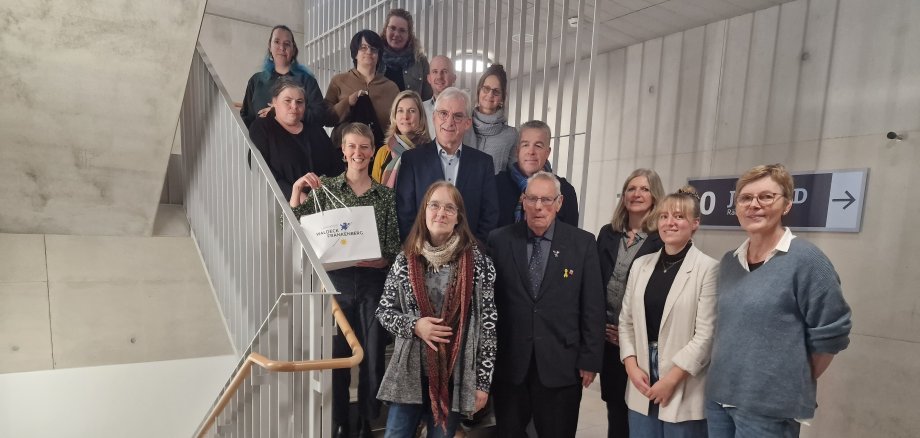Photo campaign on accessibility: district exhibits results
Everyone wants to stay fit into old age. But who can rule out being dependent on easy speech, accessible buildings or walking aids in later life? Certainly no one. The district would therefore like to focus on accessibility - and has launched a photo campaign entitled "Arrive, get in, get along", in which good examples of accessibility were honoured. The awards ceremony recently took place in the district hall. Since 3 December, the International Day of People with Disabilities, the results have been on display in the foyer of the Korbach district hall until 11 December.
Small things make all the difference
It is not impairments or wheelchairs that hinder people, it is often the barriers in everyday life - i.e. when shopping, on public transport, in restaurants, at leisure facilities or in public buildings. The photo campaign aimed to raise awareness of the challenges and needs of people - and therefore recognised good measures that lead to greater accessibility.
Lego ramp, guidance systems, easy language
Whether a wheelchair ramp made of Lego bricks, guidance systems on the floor for the visually impaired, lectures in easy language, automatic sliding doors or a signposting system with explanatory pictures: As part of the photo campaign, many pictures of measures that improve accessibility were received. "In our experience, it's not necessarily the costly (conversion) measures that make the difference, but often the little things," says Miriam Drüppel, the district's local disability officer. "We are therefore delighted that so many submissions have been received."
Clear and distinct lettering on signs, high-contrast colours, stand-up aids or easy-to-open packaging: Good examples that make a difference, even on a small scale, should be made more visible through the photo campaign. What also became clear: That there are very different types of impairments - and not all of them are always equally visible, for example due to a physical handicap. "Some disabilities are physical, some are mental, others are psychological. Others affect the senses or language or a learning disability," Drüppel continues. "Ideally, accessibility should cover all areas."
District-wide portal for barrier-free housing
The district has been committed to this for several years as one of 18 Hessian model regions for accessibility - and has already initiated many measures and offers. "Among other things, we have launched an online portal that can be used to offer or search for accessible housing," reports project coordinator Alexandra Köck. After all, finding accessible housing is a challenge, especially in rural areas. Via the portal, providers and seekers can enter their offer or request quickly and easily with just a few clicks.
The offers and requests are published online at www.landkreis-waldeck-frankenberg.de/barrierefreiheit. The model region also collects data on barrier-free housing without the intention of placement - anonymously and for statistical purposes. Anyone who owns such housing is asked to report this as well.
Barrier reporters, building advice, inclusive events
In addition to the online portal for barrier-free housing, you can also report barriers to the district digitally on the website. There is also a housing and building advice service for barrier-free construction projects and recommendations on how to organise events as barrier-free as possible. Furthermore, there is also an exchange with stakeholders from the tourism and catering sectors on greater accessibility. In short: the district wants to remove barriers in as many areas of life as possible.
